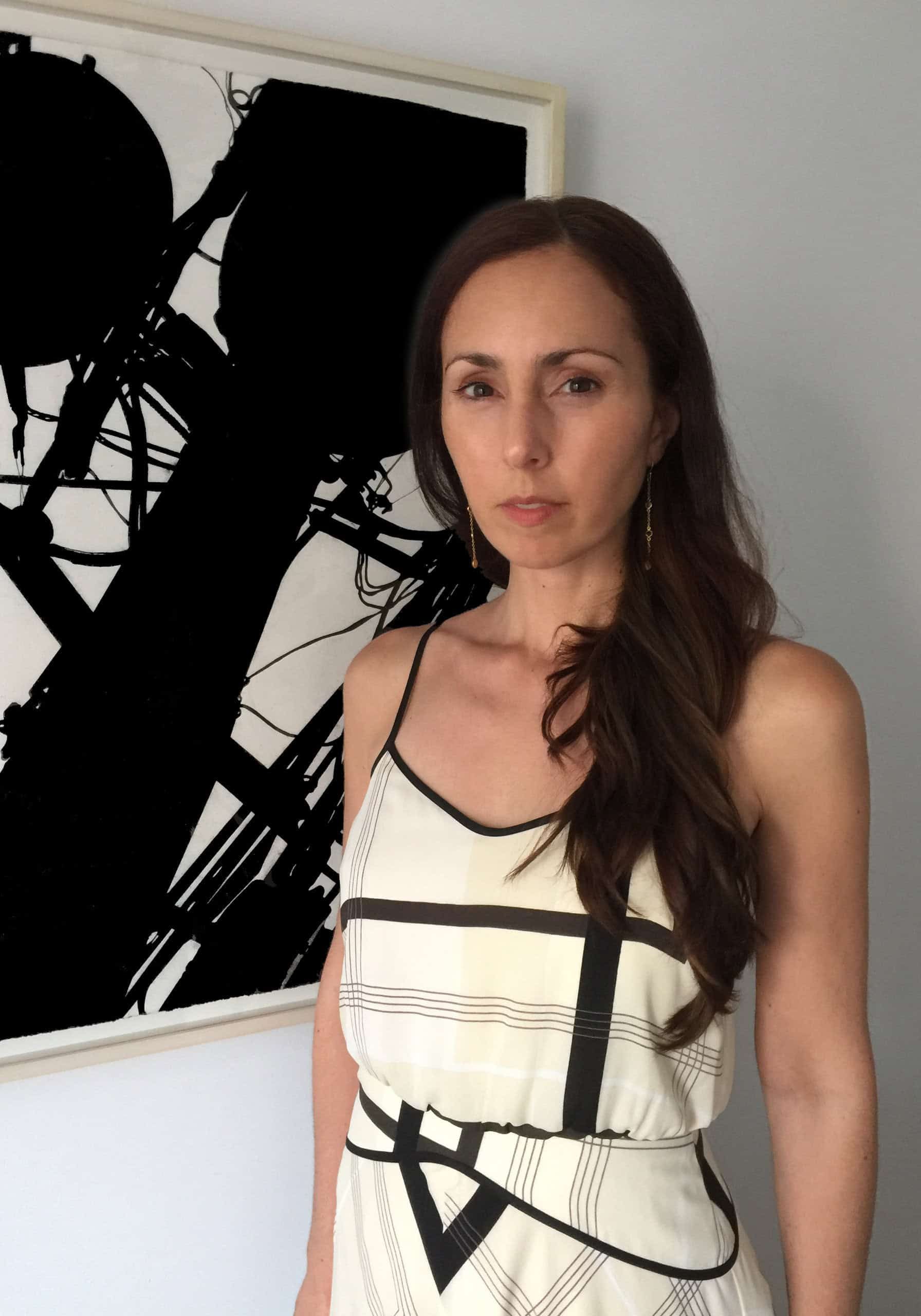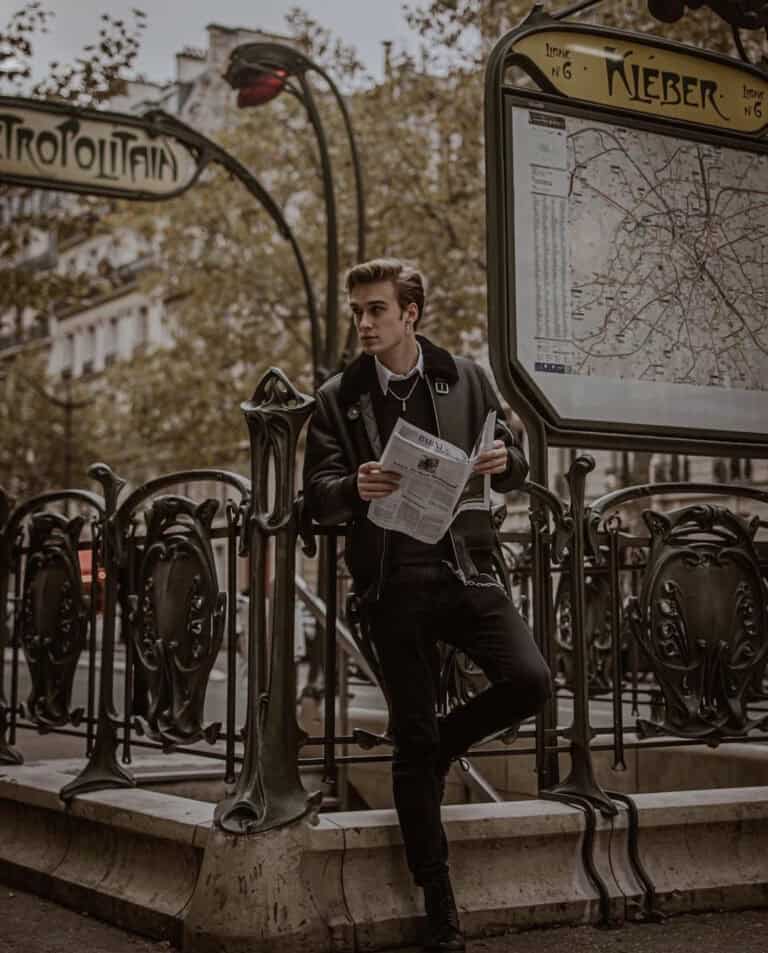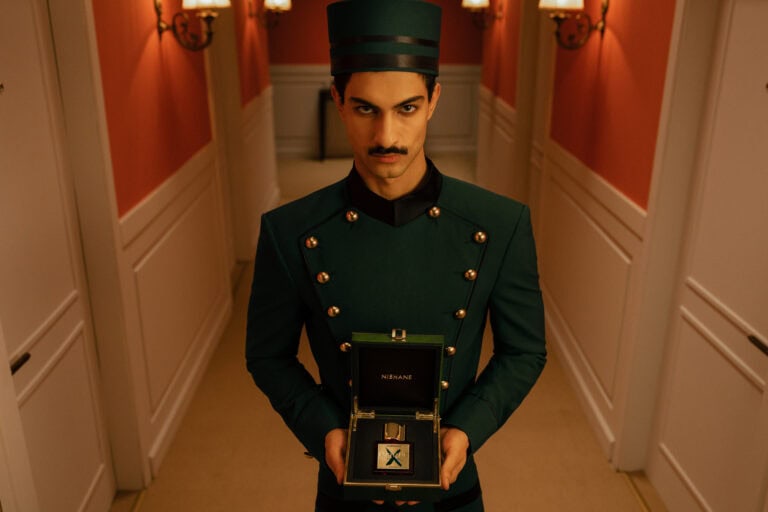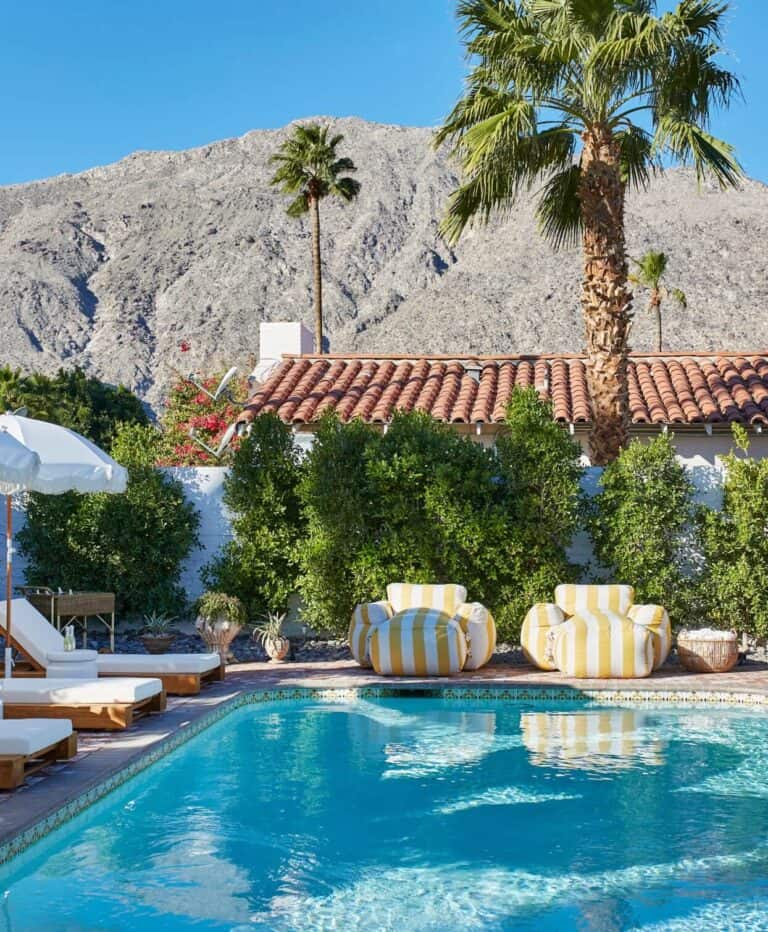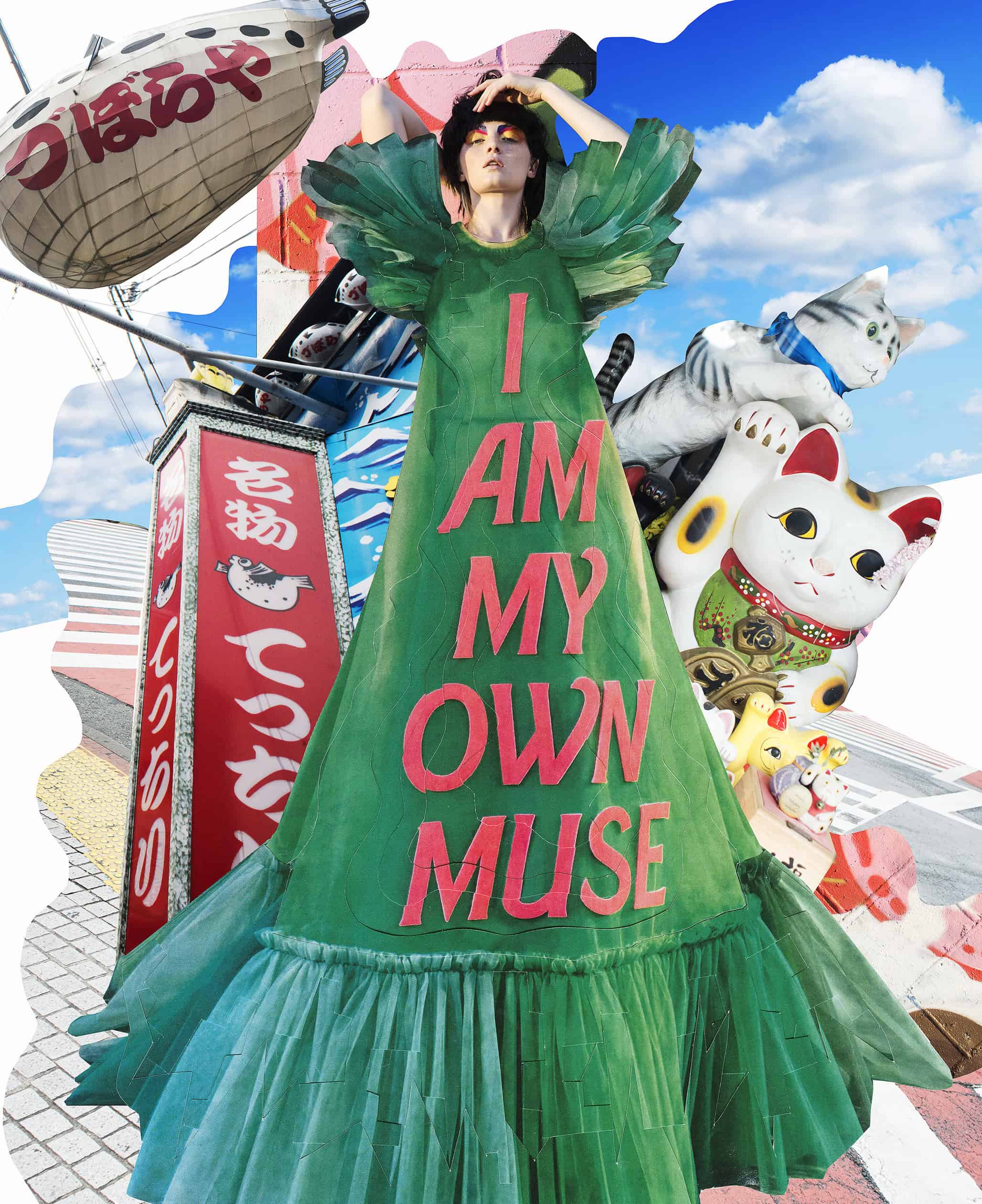
THE UNCONVENTIONAL ALCHEMY OF GL WOOD
Stacy Seiler
Fashion Photographer, GL Wood is not a fan of Photoshop. Instead, he prefers the imperfections and rough textures achieved with glue, paint, tape and scissors. When flipping through his portfolio, it’s almost impossible to fathom that a handful of simple school supplies are his weapons of choice in transforming straightforward photography into mesmerizing collage work that blurs the lines between his two loves – fashion and fine art.
Unconventional? Indeed! Yet, when you closely study the trick-of-the-eye craft that lives within each of Wood’s dynamic compositions, it’s quite easy to see why his work has graced the pages of fashion giants, such as: Elle, Vogue, Harper’s Bazaar, Nylon, GQ and W. It equally leads you to wonder, what marvelous alchemy of cut-and-paste does Wood use to achieve such unexpected visual dichotomies that seamlessly intermingled and explode with excitement.
Dying to find out? So were we. IRK just virtually caught up with Wood, where he is currently isolating in his new LA home and Wood left no detail unturned.
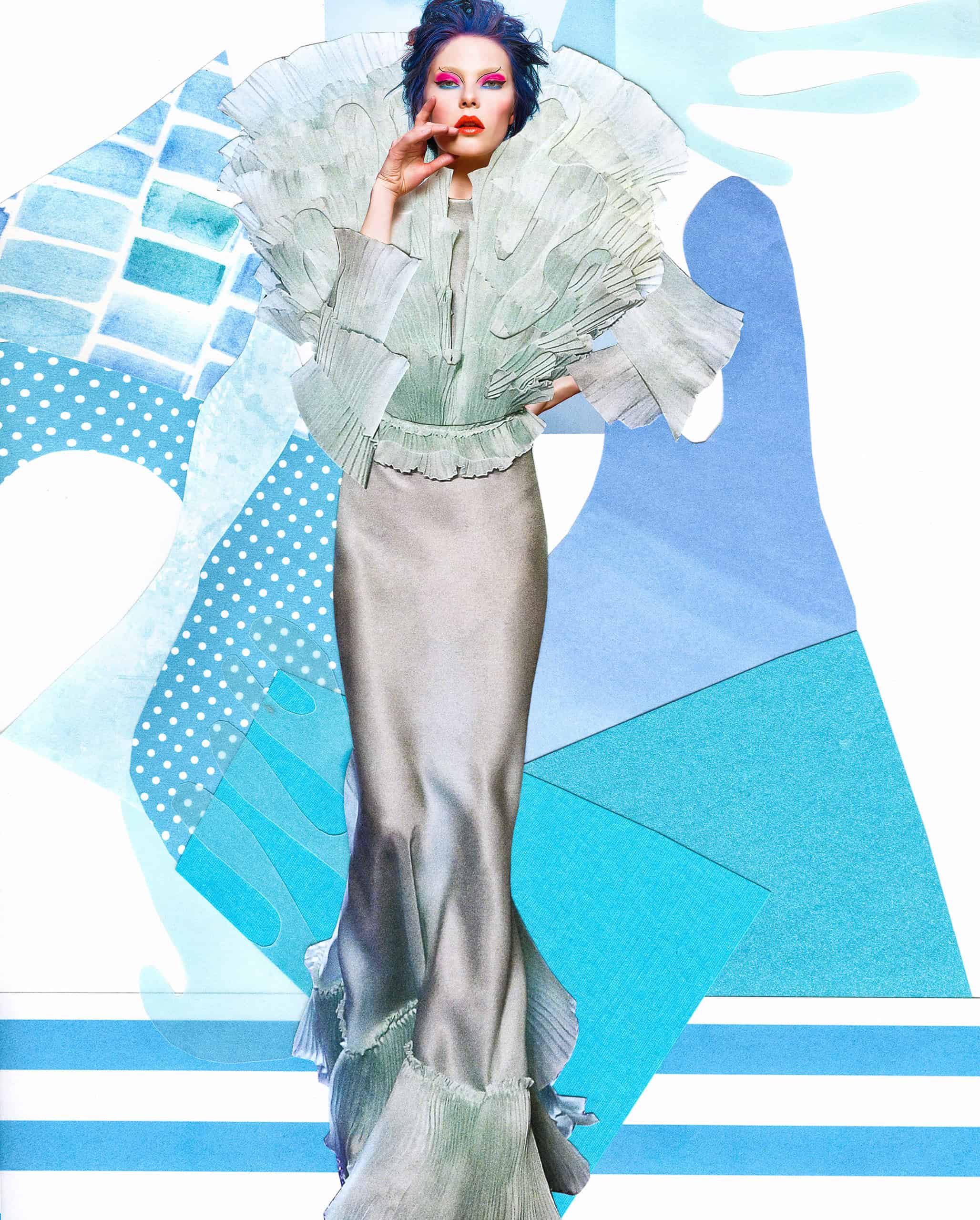
IRK: We are so glad to see that you are well. Where are you currently ‘isolating’ during the COVID 19 pandemic?
GL Wood: Myself, my wife and my 6-month-old daughter actually moved back to Los Angeles (from New York) in March, right when everything really went down. We barely moved in, and then the state locked-down everything.
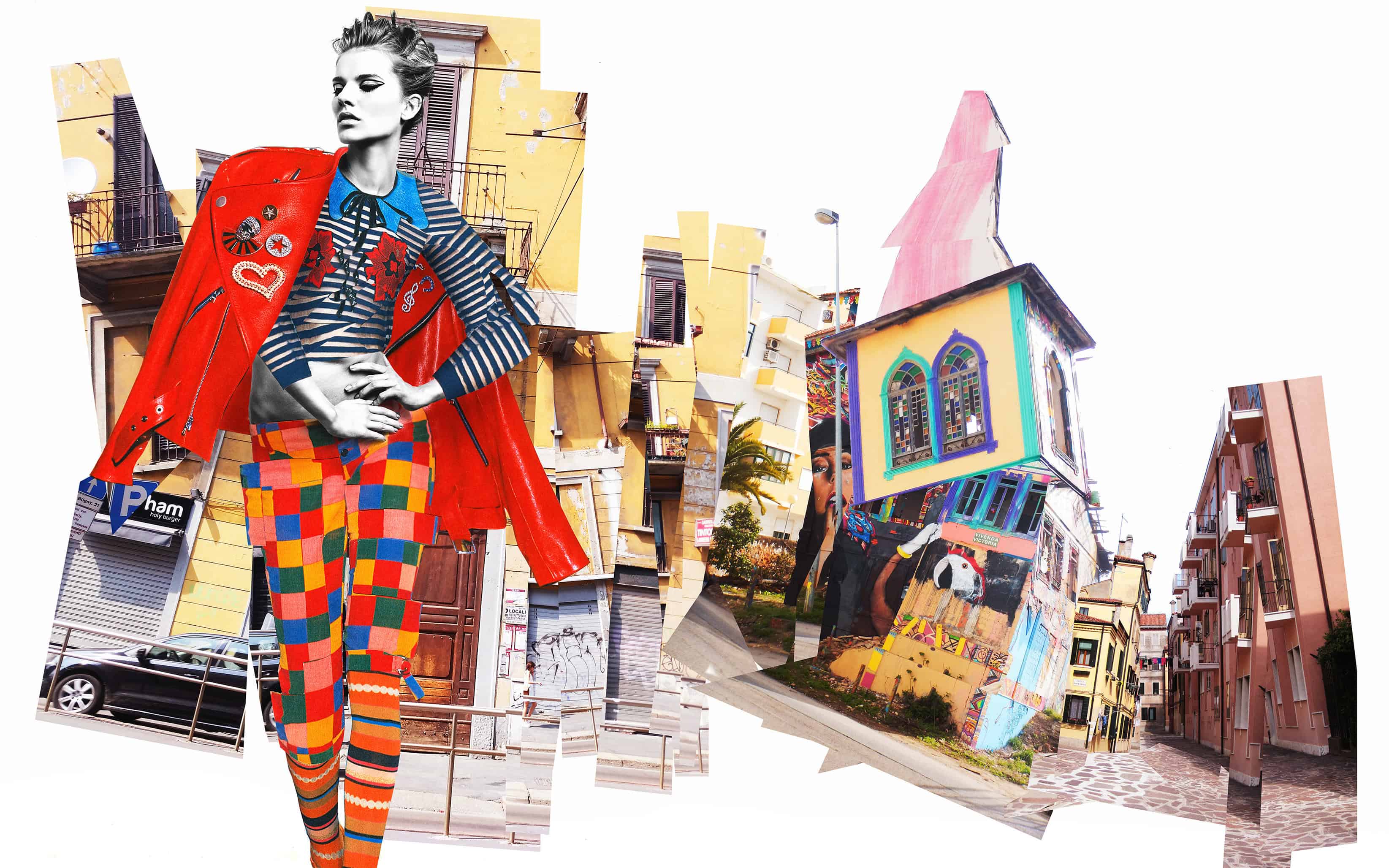
IRK: Talk about a trifecta of change; new baby, bi-costal move and pandemic… that’s intense! And you still have to keep your photography practice moving forward – deadlines are deadlines even during a pandemic. Now that we are all staying indoors to keep safe, how has your practice shifted?
GL Wood: Funny enough, my style of practice adapts perfectly for a complete lockdown. I have a back catalog of models I have shot, along with fashion to use. The only hard part is getting images printed to collage. Because there is a lockdown, not a lot of printing stores are open. Luckily, I got a couple of shoots printed right before lockdown happened, so I have new images to work on.
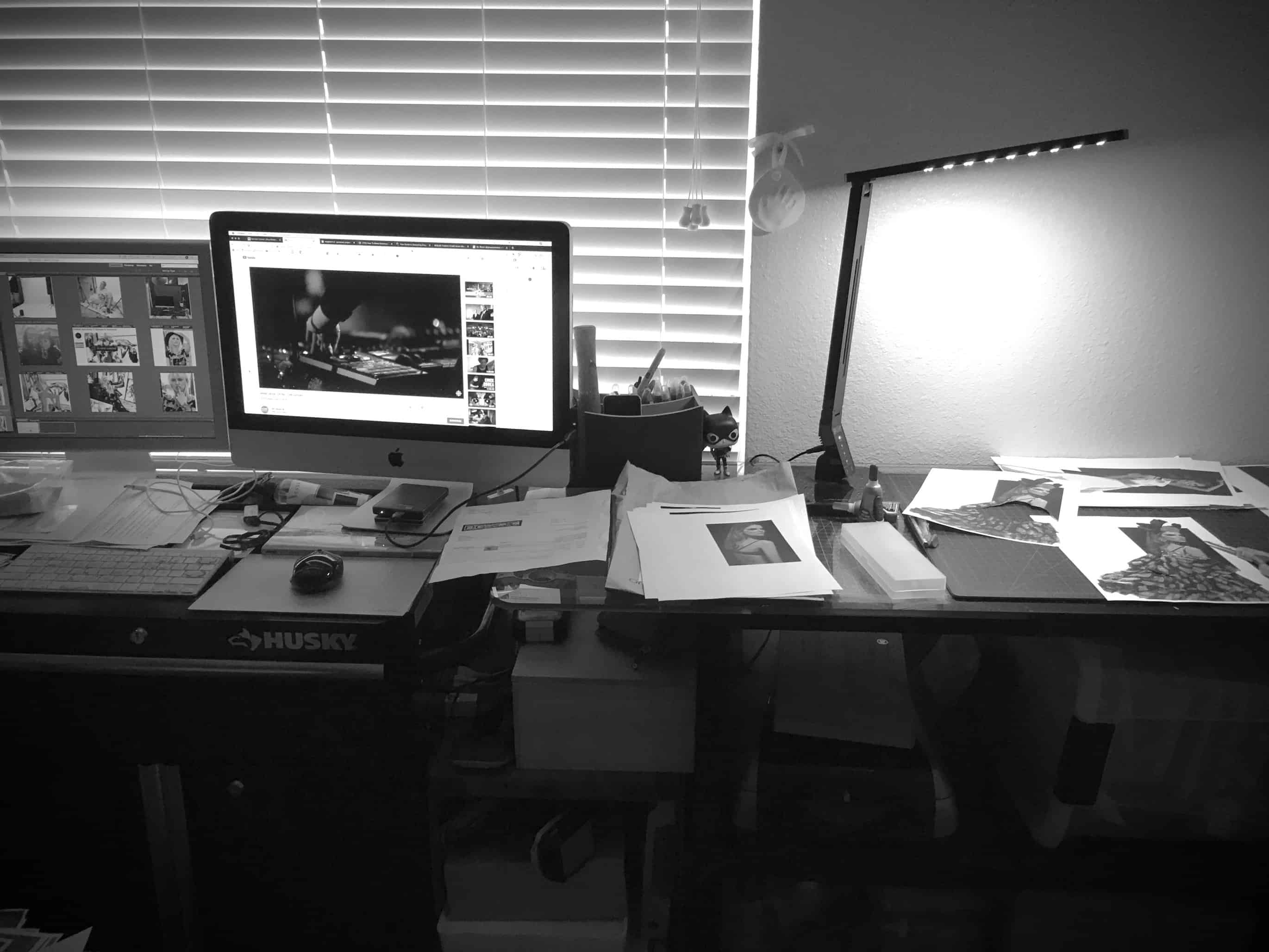
IRK: If you were to give us a little peek into your ‘isolation’ studio, what are your go-to materials and tools that you have on hand?
GL Wood: Since I moved right when lockdown happened, I never got a chance to research a new office space in LA. I have had to become super minimal with a studio and workspace. I made a small office/workspace in the corner of my daughter’s room, and I have a portable background drop to use in the living room to shoot on. The go-to materials are still available. I have all that I would need in my new place, but the fact is it’s now limited to size-of-space. I am basically kicked out of the space when my daughter needs to nap, ha ha!
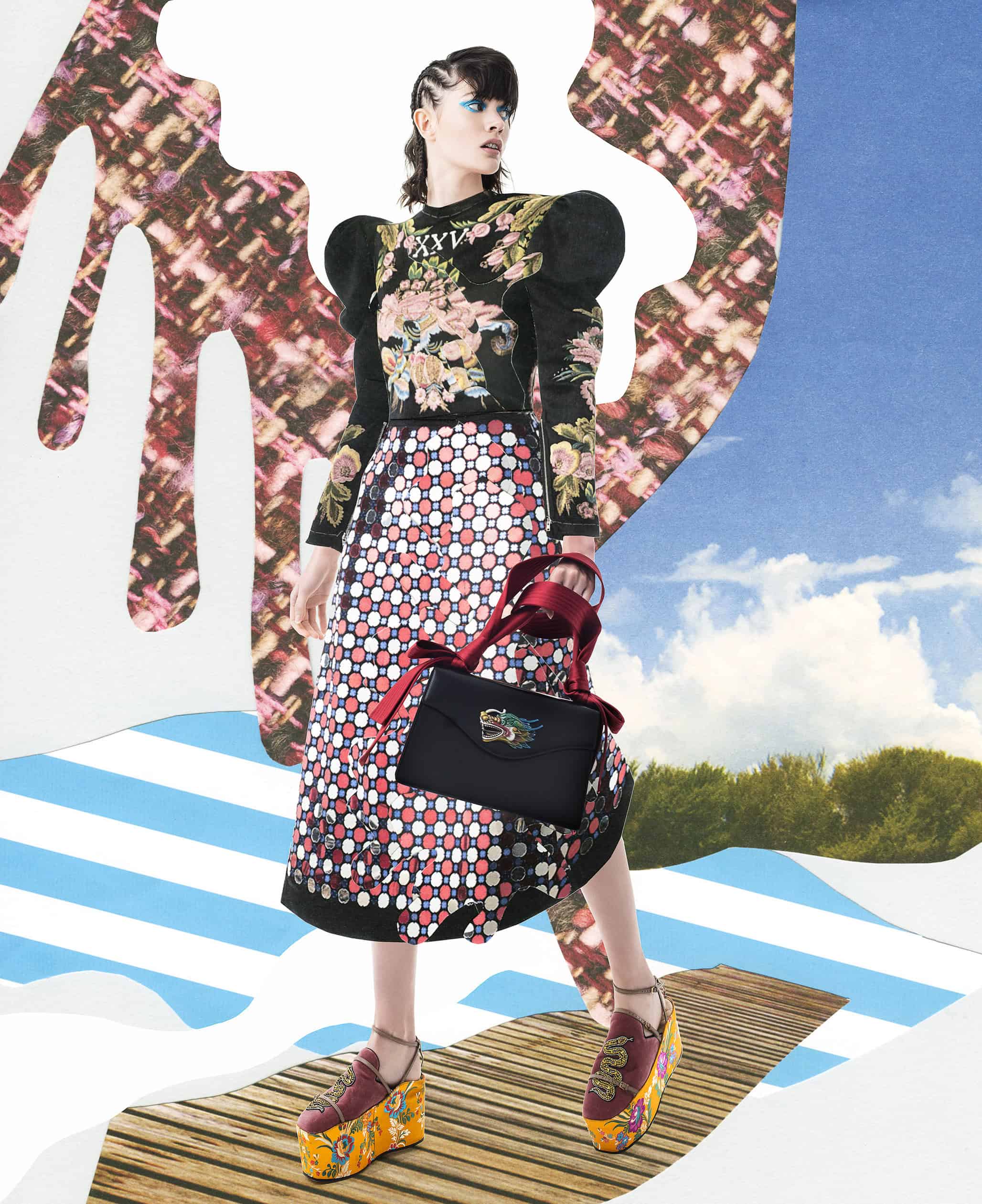
IRK: What are you working on right now and have you had to alter any projects in order to continue producing/completing them under our current circumstances?
GL Wood: I am working on three new concepts right now. Since getting things printed is harder to find, it has limited my process. I didn’t want to go all digital with the collage, because it looses the texture, so I have had to think of other concepts and tricks I can use to help bring something new to the table; some new textures and emotion.
IRK: What is your favorite go-to activity [other than photography/collage] that is keeping you sane while being confined indoors?
GL Wood: Definitely my 6-month-old daughter. She is at a great age now and is absorbing so much information. Secondly, I have a Moto Guzzi V7 III that I ride and work on. That has been great for getting out of the house every week.
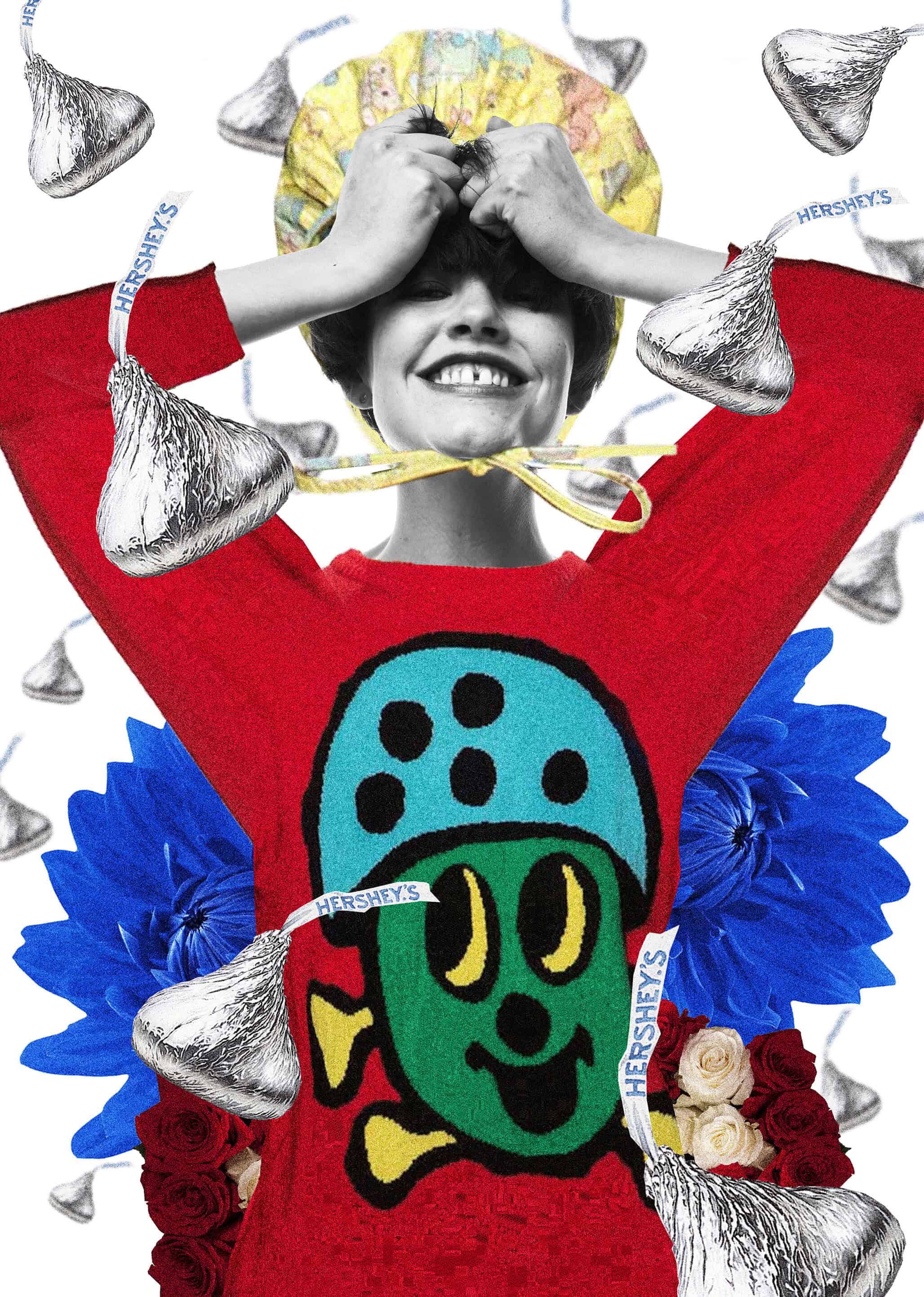
IRK: What advice would you give others struggling with limited resources while trying to maintain their artistic practice at this time?
GL Wood: My advice would be to stick with your work. Don’t get discouraged because others are getting success before you. Your time will come. It just takes longer to get to the finish line. Also don’t be afraid to take a break from photography. Everyone needs a break from their craft to help recharge the creative juices. Having all the resources in the world, best camera, best studio, best lighting, etc. doesn’t make you a good photographer. The person makes the photographer. I have always had limited resources. I shot some of my most creative images in my small NYC apartment for 10 years with the same lighting equipment I had for 13 years. I worked with what I had and tried to be the best I could be with the tools I was given. If you can make a beautiful image with one light, a wall and an old camera, then you are set. You can handle any shoot that you are given. As long as you enjoy what you are creating, that is all that matters.
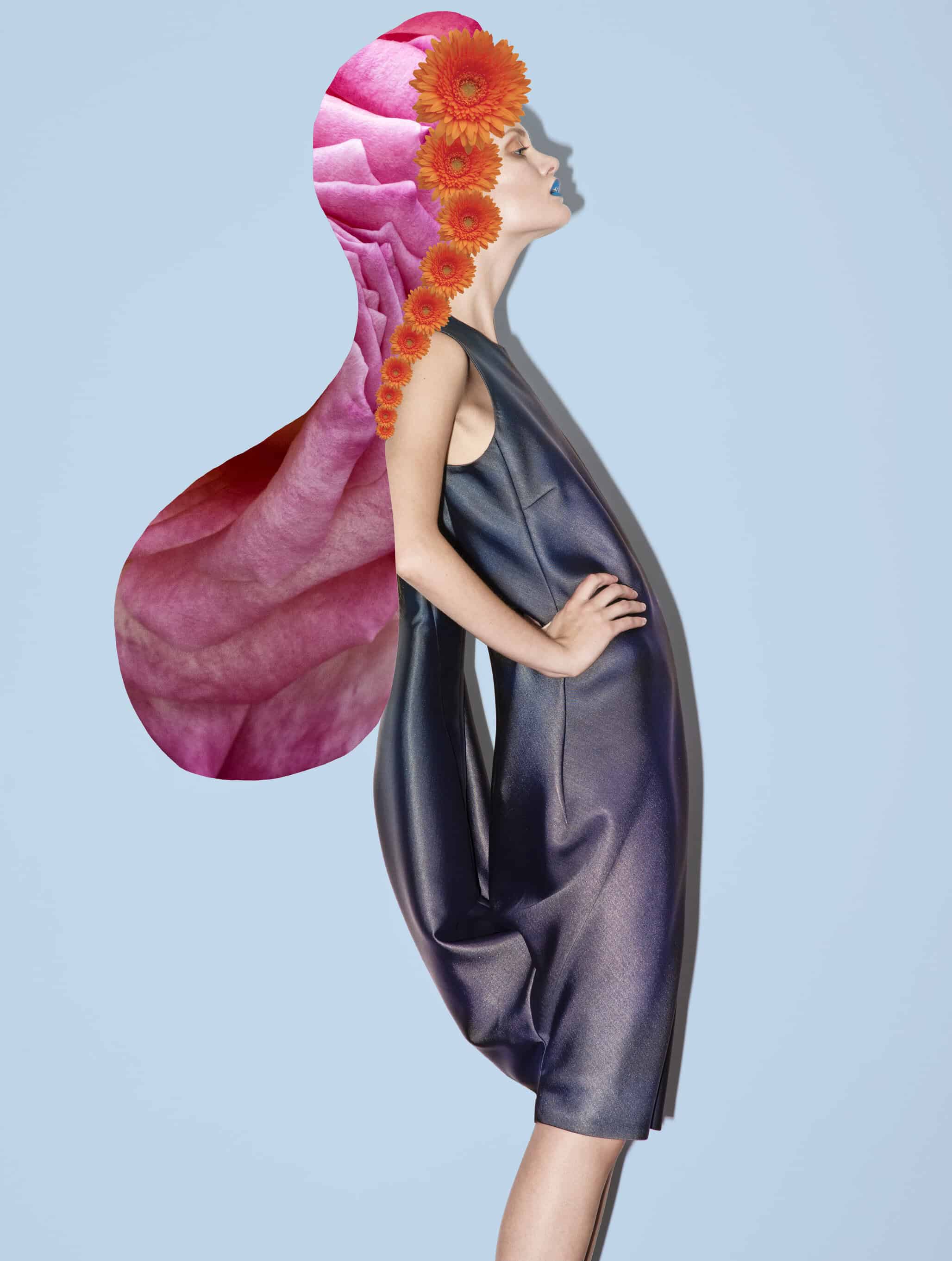
IRK: Well, since we have time to indulge these days, let’s take a look back to the evolution of your career. Can you share with us your earliest memory of when you first knew that you wanted to be an artist? How old were you and what type of work were you creating at the time?
GL Wood: As far back as I can remember I was always interested in creating art. Some of my earliest memories where when I was about 4 or 5 years old, and I would go on errands with my family. I would get bored very easily and would need something to do. My mother would hand me whatever paper and pen was available and I would doodle. Sometimes the paper wouldn’t be blank, it would be a brochure, envelope, business card, etc. and I would doodle around the prints and work within the space I was given to create whatever was in my mind. The work would be very simple; a lot of shapes and patterns to decorate the item I was handed. Sometimes I would incorporate stick figures to interact with the print on the paper. It may not have been groundbreaking work but it was an outlet for my brain.
IRK: If photography wasn’t your first love, tell us your journey of how you developed as an artist.
GL Wood: At 5 or 6-years-old, I was introduced to comic books. I loved cartoons on TV, but I didn’t realize that people hand-drew the animations. To me, the cartoons I watched just existed. It wasn’t until my parents gave me a Spiderman comic book that I realized that someone had to hand-drawn the images and it got me excited. Maybe it was the fact that it was lines and ink on paper, but it made more sense to me than animation on a TV. From there I was really focused on making comic book art. I wanted to work for Marvel or DC Comics and create my own book. Then, when I was 12, my interest transitioned from superheroes to Japanese Anime. I was obsessed with Anime, Manga and everything from Japan. My creativeness was heavily influenced by Manga style up until I went to college. Being introduced to art history and artistic techniques expanded my mind and opened up my definition of creativity. The comic book, Manga animation influence soon lost interest to me, only to be replaced by chiaroscuro, the Italian Renaissance, abstraction, Post Modernism and Pop Art.
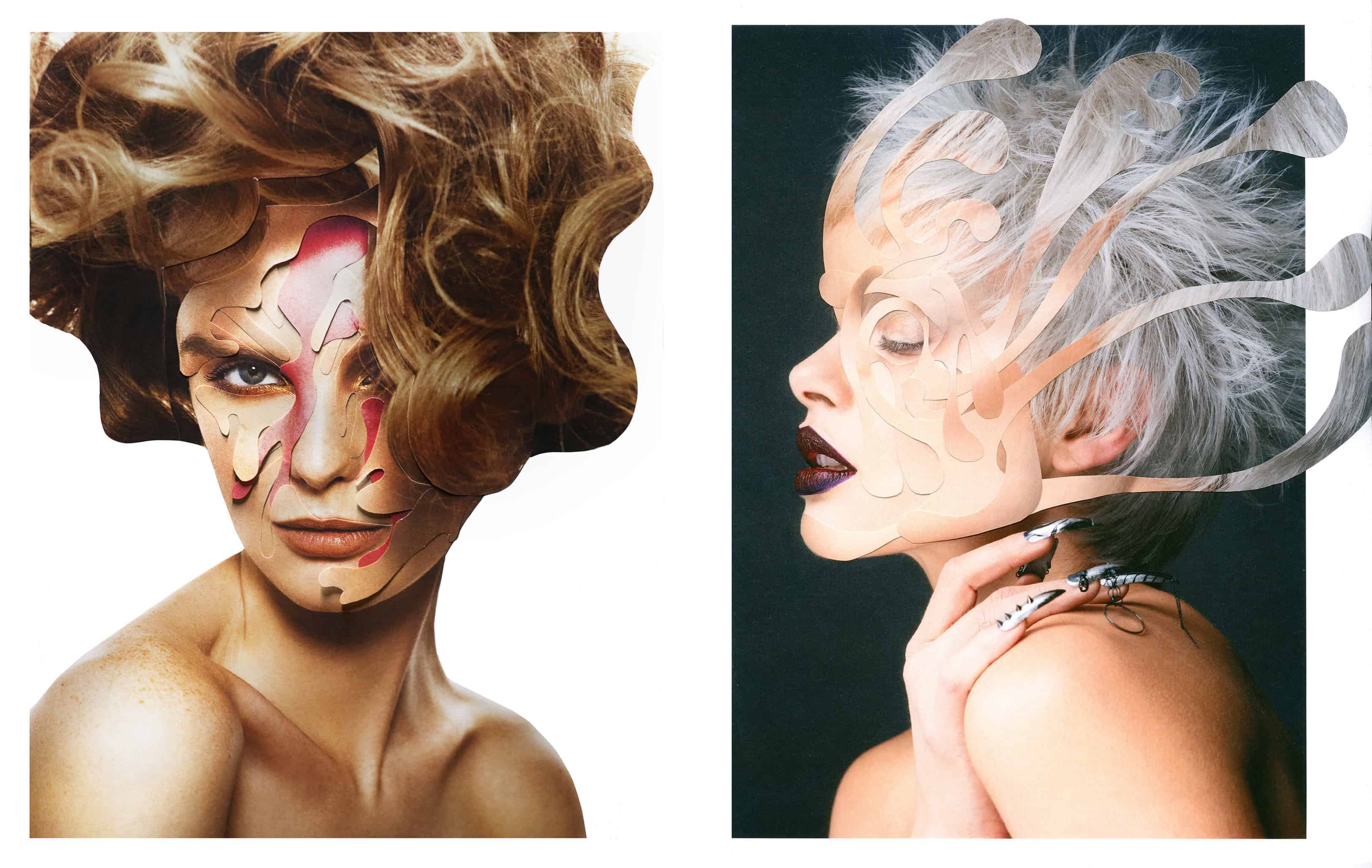
IRK: I’ve heard that it was a serendipitous accident that led you to study photography in college. Can you share a little bit about that experience with us?
GL Wood: It actually wasn’t an accident. I did study photography at the University of Georgia, but I wasn’t thinking that it was something I wanted to do once college was over. I ended up taking the classes as electives because the bookmaking classes that I wanted were full. During my photography class, I was using my father’s old 1984 Minolta with a 35mm lens. It was a piece of junk. It leaked light through the lens, the meter didn’t work and I had to tape the backing of the camera closed.
In college, I wasn’t in love with photography. I was in love with mixed media. I thought of photography as another tool to use for my mixed media work, and that is how I treated it. I would experiment in the darkroom with the development of film, basically just ‘doodling’ with the techniques and bringing those outcomes into my mixed media work. My photography professor was really positive about my work and wanted me to focus on entering the photography program. I was more interested in being a Pop Artist and wanted to head in that direction.
Once I graduated college, I moved to California to look for graduate schools. At first I found it difficult getting accepted into programs, so I continued to look at schools that weren’t on my main list of choices. I remember looking at California State University, Long Beach and liked their graduate program, but I was going to have a wait another 6 months until I could start classes. While driving in Long Beach, I saw an art and design school called Brooks Collage. I sent them an email stating that I was interested in the program and would love a visit. The next day I got an email back to come meet with a faculty member in Santa Barbara – not Long Beach – which I thought must be their main campus. When I met with the faculty member, I showed him my mixed media work and he said, “Nice work, so what do you want to do here?“ I responded saying, “I would love to continue fine art, mixed media and graphic design.” To my surprise his response was confusion. He said, “Well, we don’t do that here.“ I was also confused and responded, “Isn’t this Brooks College?” and he responded, “No, we are Brooks Institute. We focus on photography.“ I realized I had emailed the wrong school! On my drive back I thought of the odds of that happening and wanted to take a chance. Let me go down this road instead. And so I attended photography school instead of going to grad school for fine art.
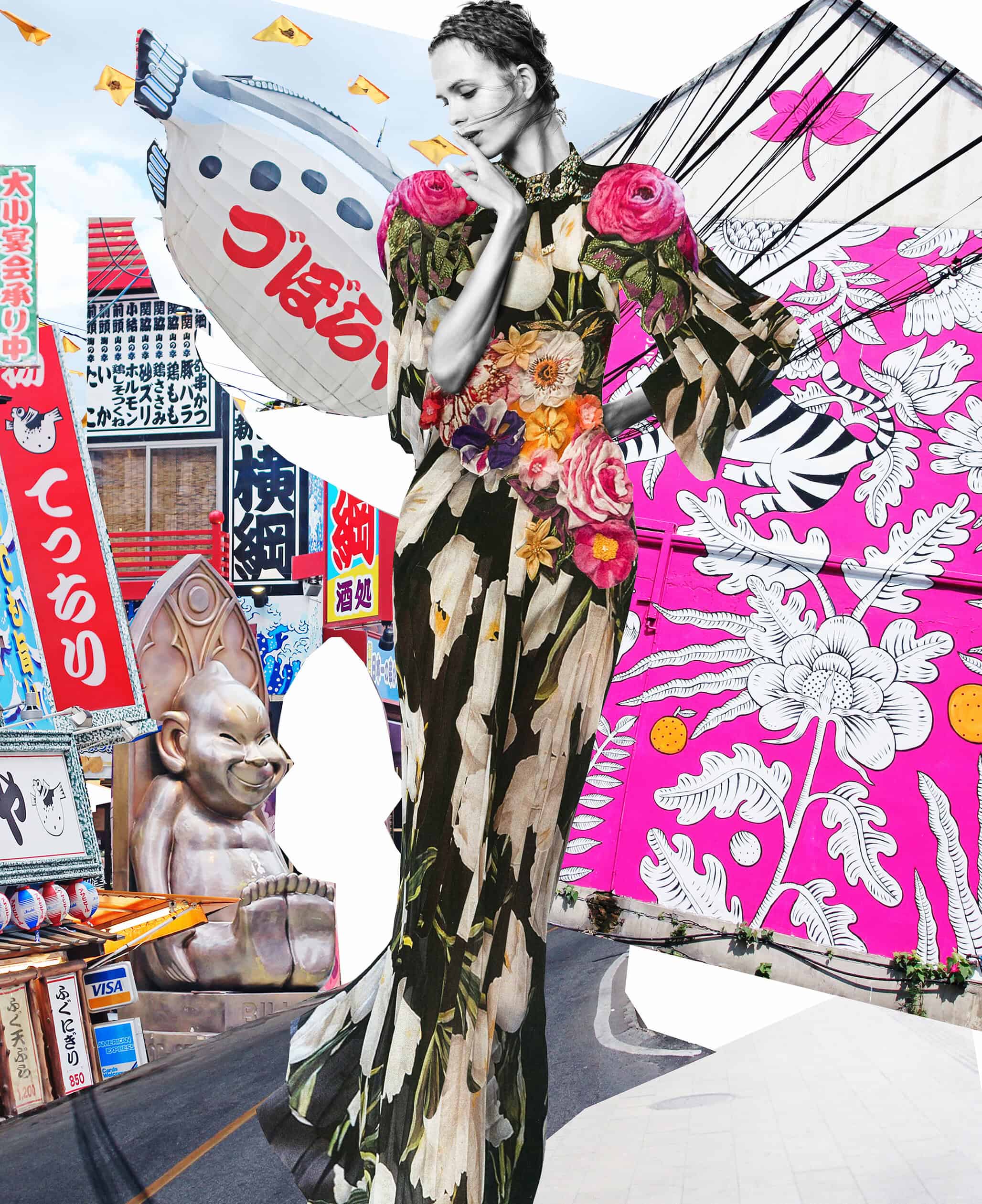
IRK: What drew you to focus your practice on fashion photography and was there a particular moment when you knew that editorial photography would be your future career?
GL Wood: Fashion photography was something I didn’t plan on. Once at photography school, I still had the mind of a fine artist. I wasn’t the best student early on because I was always trying to do my own thing, and not what the professors assigned me. I was very stubborn and didn’t want to say, “I am a photographer“, even though I was at a photography school. I thought of the school as a place to learn a tool to add to my fine art. It wasn’t until my second year that I discovered fashion photography was something that interested me. I had a class, Fashion Portraits, and loved that I could be creative with the lighting and development of the image without disobeying a professor. I was encouraged by my professor, Nino Rakichevich to experiment more and to continue what I was doing. That encouragement made me realize that I could call myself a photographer and embrace the new position I am in now.
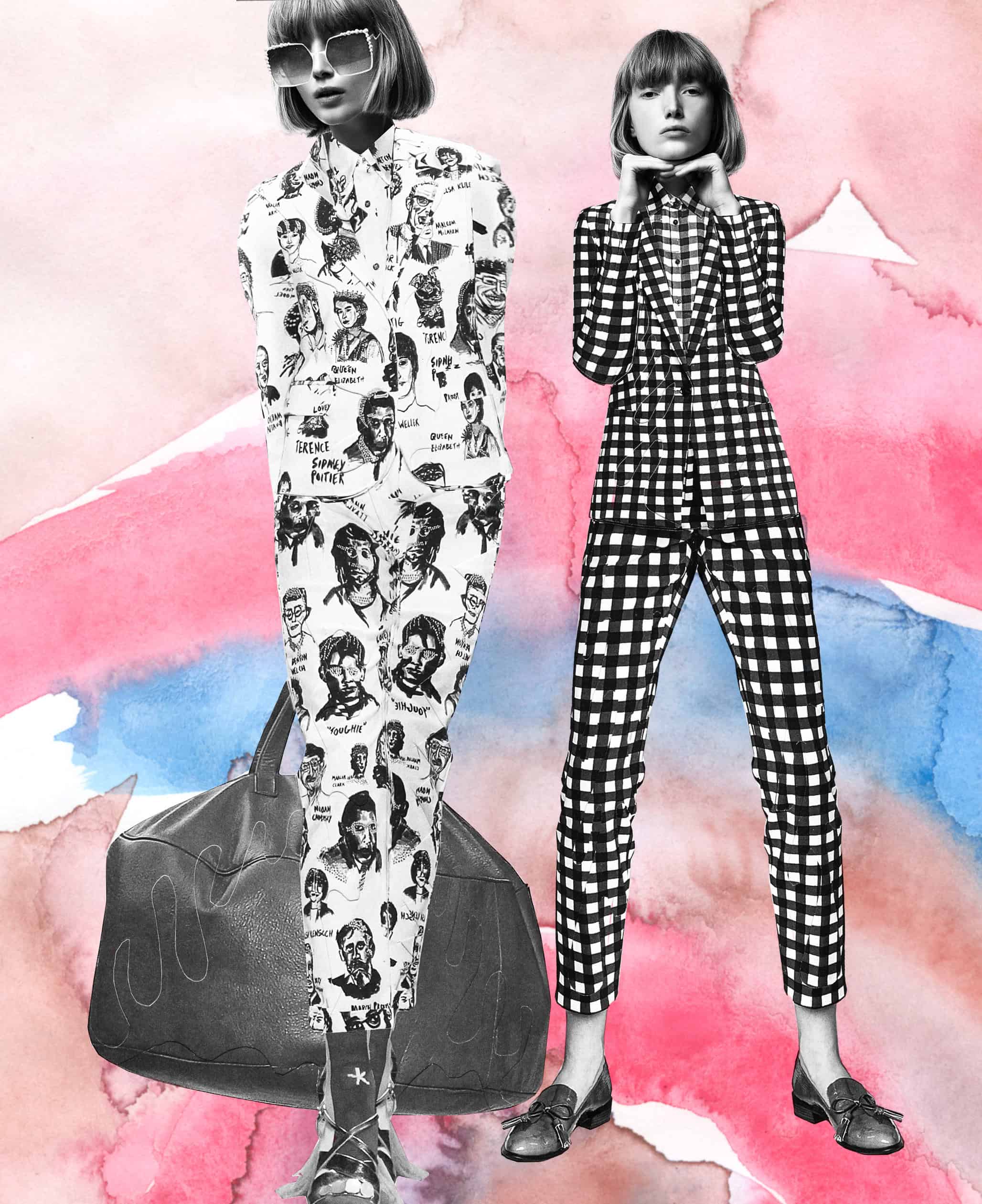
IRK: How did you begin to develop your own distinct voice within the industry? In other words, what makes a GL Wood piece uniquely GL Wood?
GL Wood: Once I started to accept my new path as a photographer, I stopped trying to force my fine art past into my work. I developed new styles and techniques that were unique to the medium of photography. When I look back at my early years, I wasn’t afraid to experiment with photo techniques. Once I adopted photography, I was extremely curious with the many tricks and effects I could do (all analog at first, then digital). Even if the outcome was terrible, I was ok with presenting it. What made my work stand out was that I was using the medium to think outside the box. I was willing to take chances, good or bad and I was okay if an image wasn’t well received.
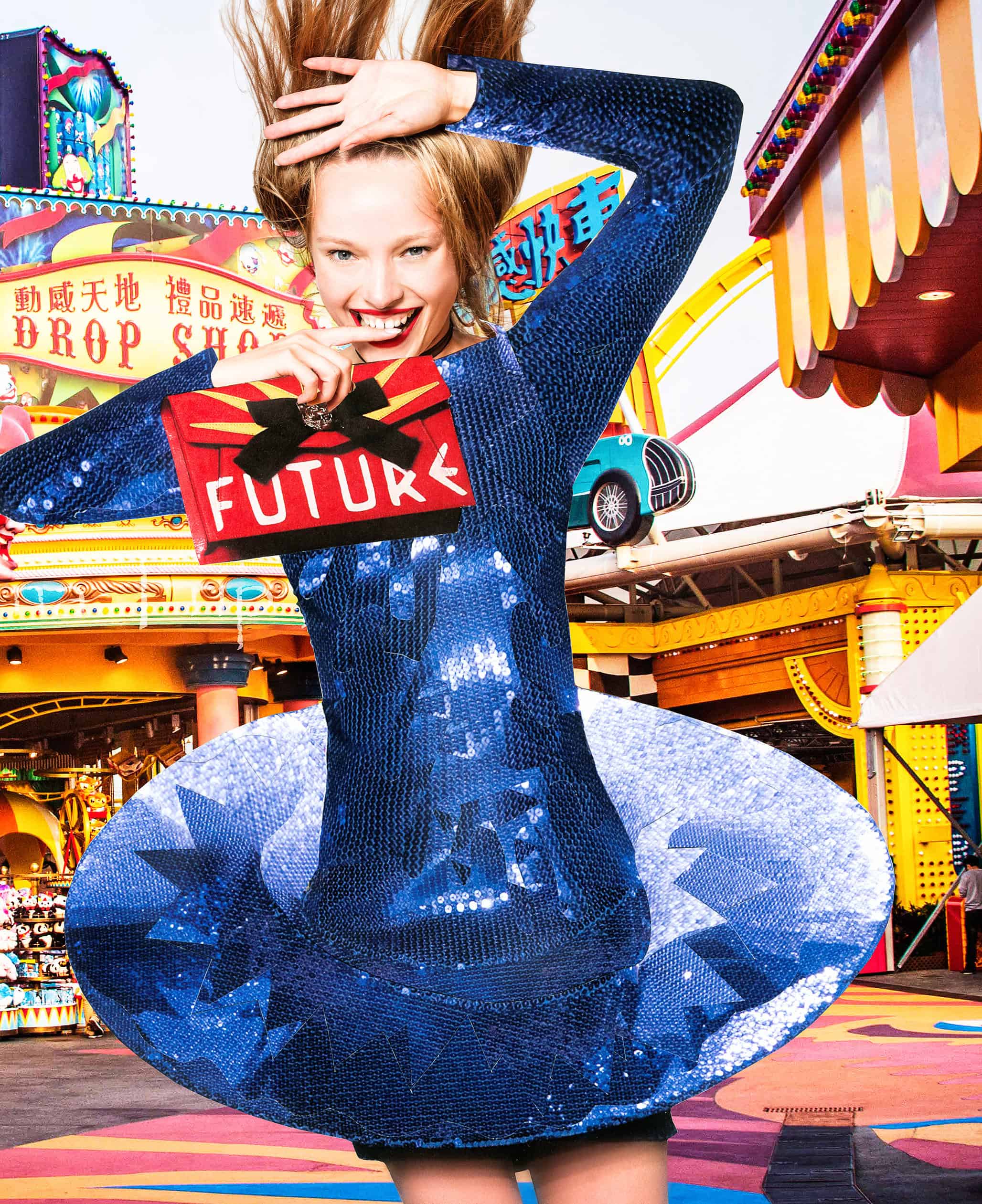
IRK: What gave you the idea to move from fashion photography to incorporating mixed media collage?
GL Wood: That moment happened after my first year in New York City. Once I moved from Los Angeles, I had a meeting with some important clients, Vogue, W, Nylon, and WWD. I got a harsh reality check in these meetings. Every single editor hated my portfolio. Kind words were not said. My work just didn’t fit the ‘New York fashion world’. It was too ‘Los Angeles’, and too colorful and bright. During 2008-09, NYC fashion was very dark and grey – not a lot of color or fun with the images. After a year of rejections from clients and editors, I began listening to the new creatives that I had worked with. They recommend me to change my style to fit in with New York. However, I didn’t want to conform and follow what every other NYC photographer was doing just to get jobs, so at the end of the year I took my portfolio and website and tossed it all in the trash. I made a plan that in 2009 I was going to start over and do the type of photography I felt would be original and different. That was the time where I decided to bring back my fine art and mixed media techniques to intertwine with my photography. It wasn’t something that was commercially successful. It took me years to perfect the style so that it would work in the commercial world. I believe 2015 is when I found the perfect mix of commercial fashion and mixed media.
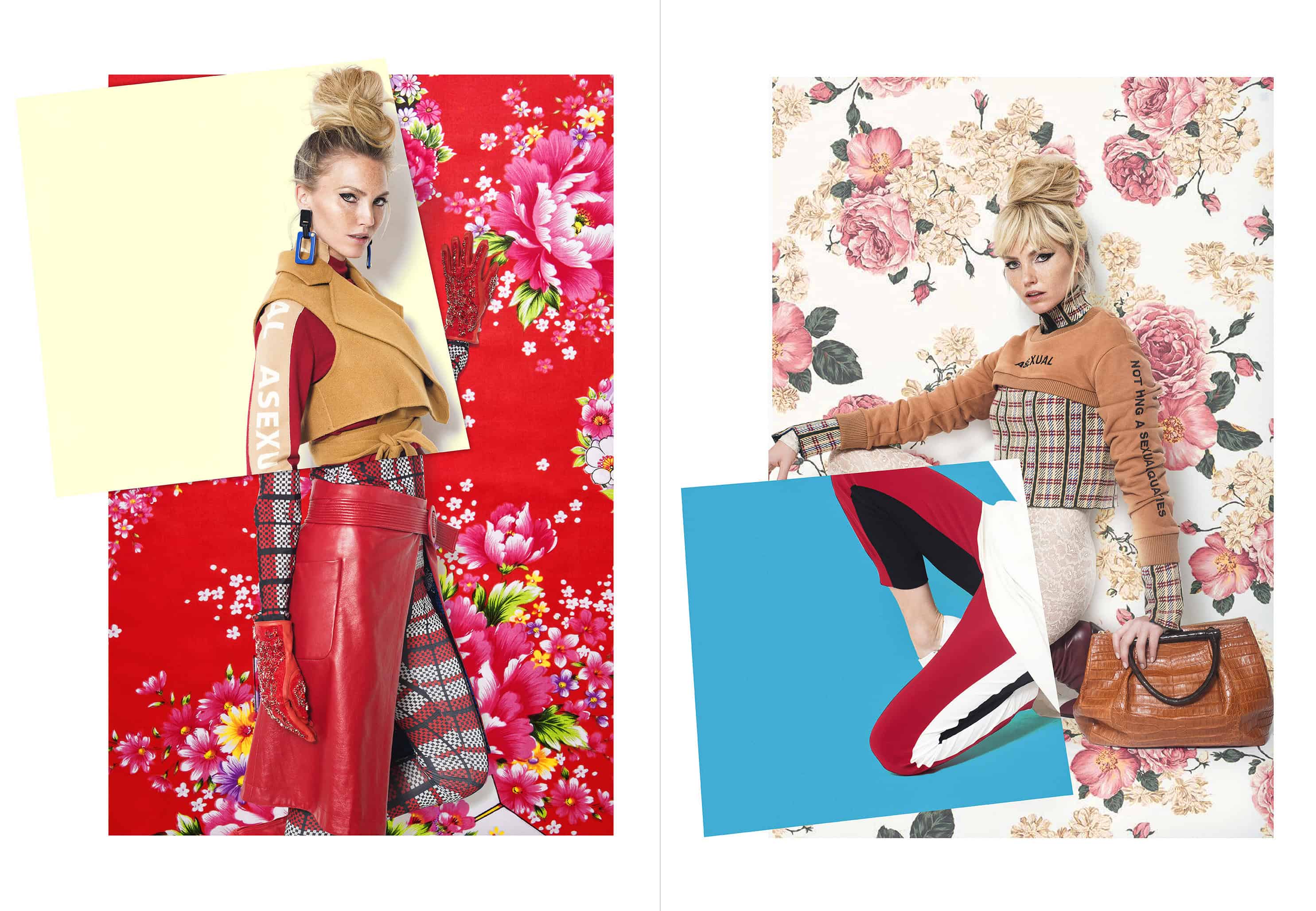
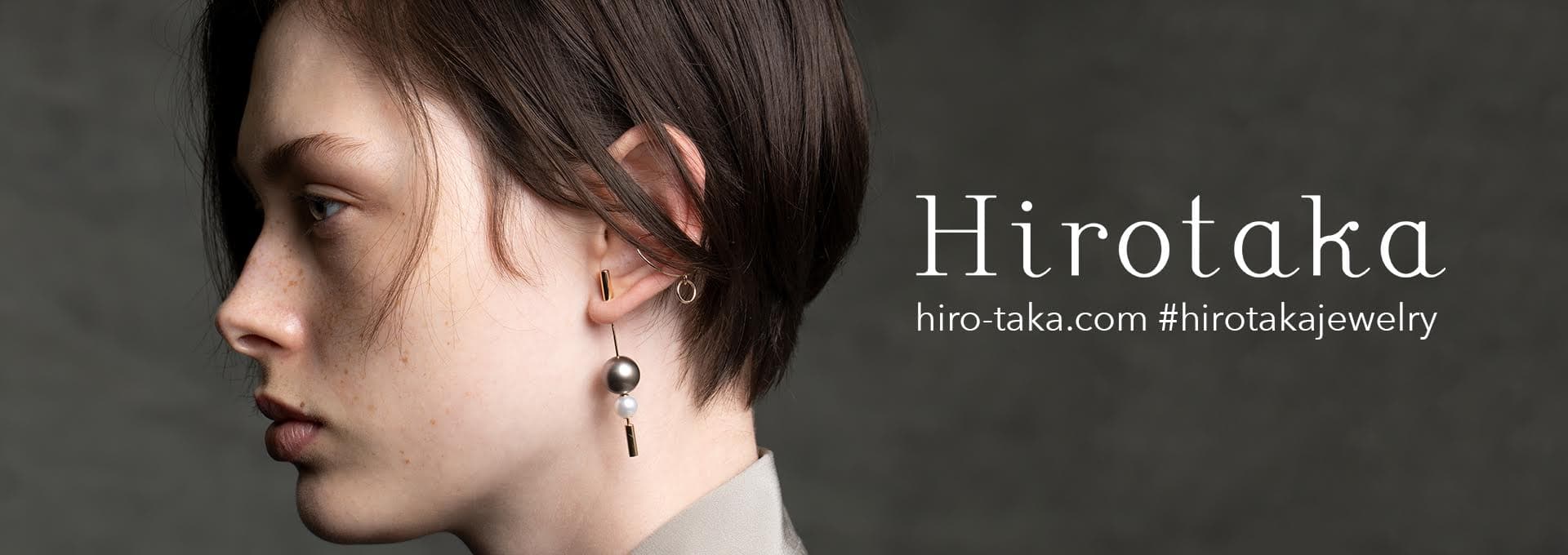
IRK: Walk us through your method of turning your fashion photos into an editorial collage? What are the fine art materials and digital tools that you cannot live without? What is your balance between digital manipulation and analog craft?
GL Wood: When I first started working in my fashion collage style, I thought of it as a modern take on paper dolls. I would set up a shoot with hair, makeup and the model, and proceed like a normal shoot, except there wouldn’t be a stylist on set. The model would wear a bathing suit and get her hair and makeup done as if it was a normal shoot. I would then tell the model to pretend she had clothing on and give some coaching on poses that would work well for the needed effect. It is always strange for people on set to imagine what I am going to do, so I always have examples to show of the style.
- Part 1 of my process is shooting the model.
- Part 2 is shooting the fashion. I have a stylist bring the clothing another day to shoot on a wall or have a showroom send me a lookbook to sample images.
- Part 3 is to composite the clothing to fit the model digitally and everything is saved in multiple layers.
- Part 4, all the separate layers are then printed and I start the process of hand cutting and collaging the clothing, model, and backgrounds together.
- Part 5, I scan everything back into Photoshop and start to clean up the final image.
I could do everything in Photoshop, but I don’t like to focus on Photoshop 100%. I like using it as a tool to help get me where I need to go for the final image, but creating the effects of the collage by hand and then cleaning it up digitally gives the image a sense of texture and depth. When it comes to tools, I am very minimal. I only use a couple of X-Acto knives and razors, super glue, tape, scissors, paper, and my Epson scanner to create my images.
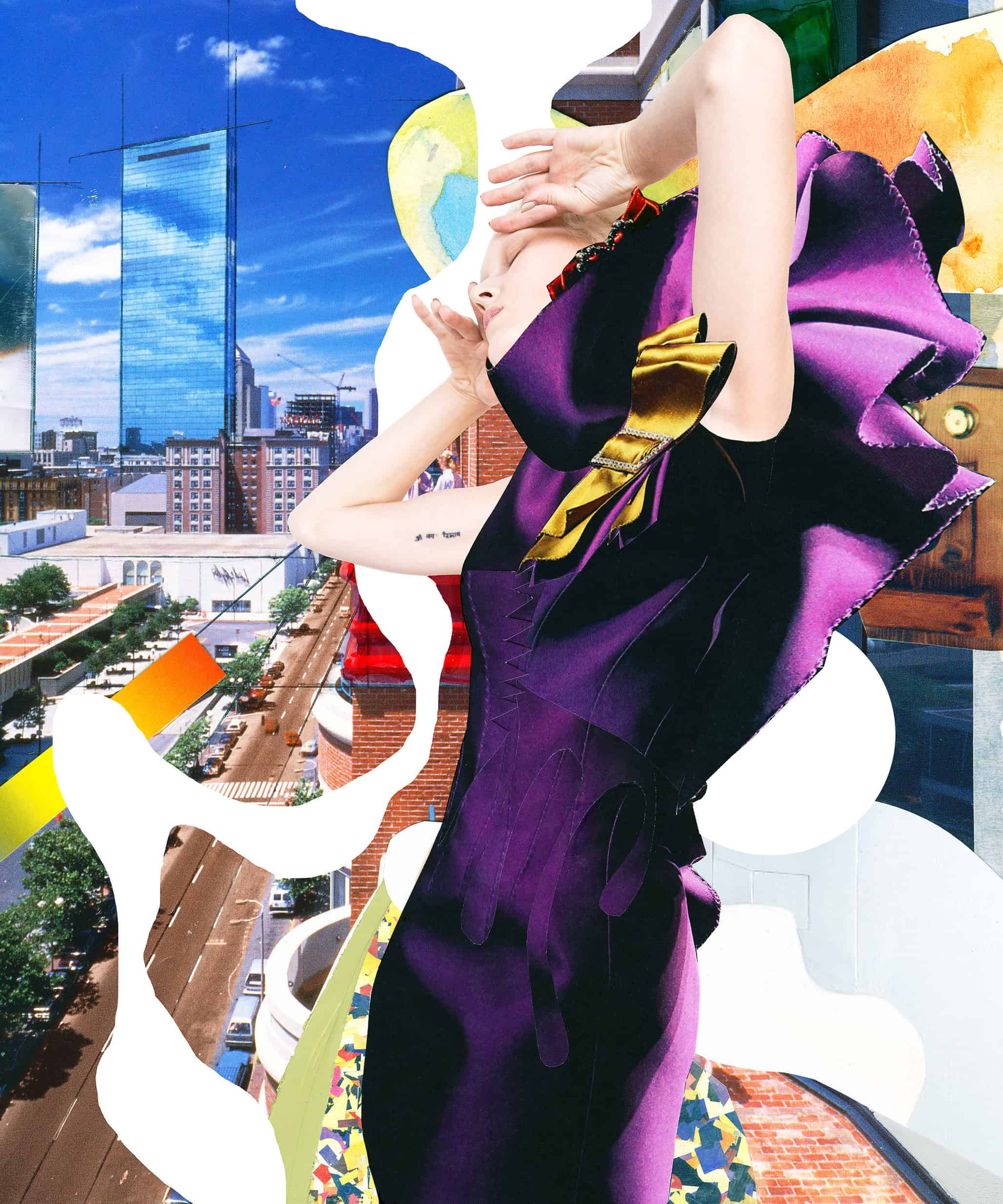
IRK: Your collage is a visual symphony of saturated color, pattern and texture. Where do you find inspiration for your work and are the textural surfaces, environments, architecture and accessories in your editorial collage works also crated from your own photography or do you incorporate images from other sources?
GL Wood: I don’t really know exactly where a majority of my inspiration comes from. I always have a rough concept of an idea. I like to play around with concepts. It’s one of the great reasons why I have been doing this (photography to collage) process for 5 years. I can shoot the models and later create a concept with them months down the road. I am not forced to have a concrete concept right away. The inspiration comes typically after I have shot everything. I always shoot on white, so it’s like a blank canvas. I might get inspired by music, something I saw online, a movie, a person, a place, a story, and then I start to experiment with ideas and concepts using the images that I took, until a full fledge theme develops. I feel that it’s a very painterly way to go about the medium. Normally everything is shot or painted by me to create the fashion collage image, but I have also sampled images from the internet or used other photos to help create a certain montage or story.
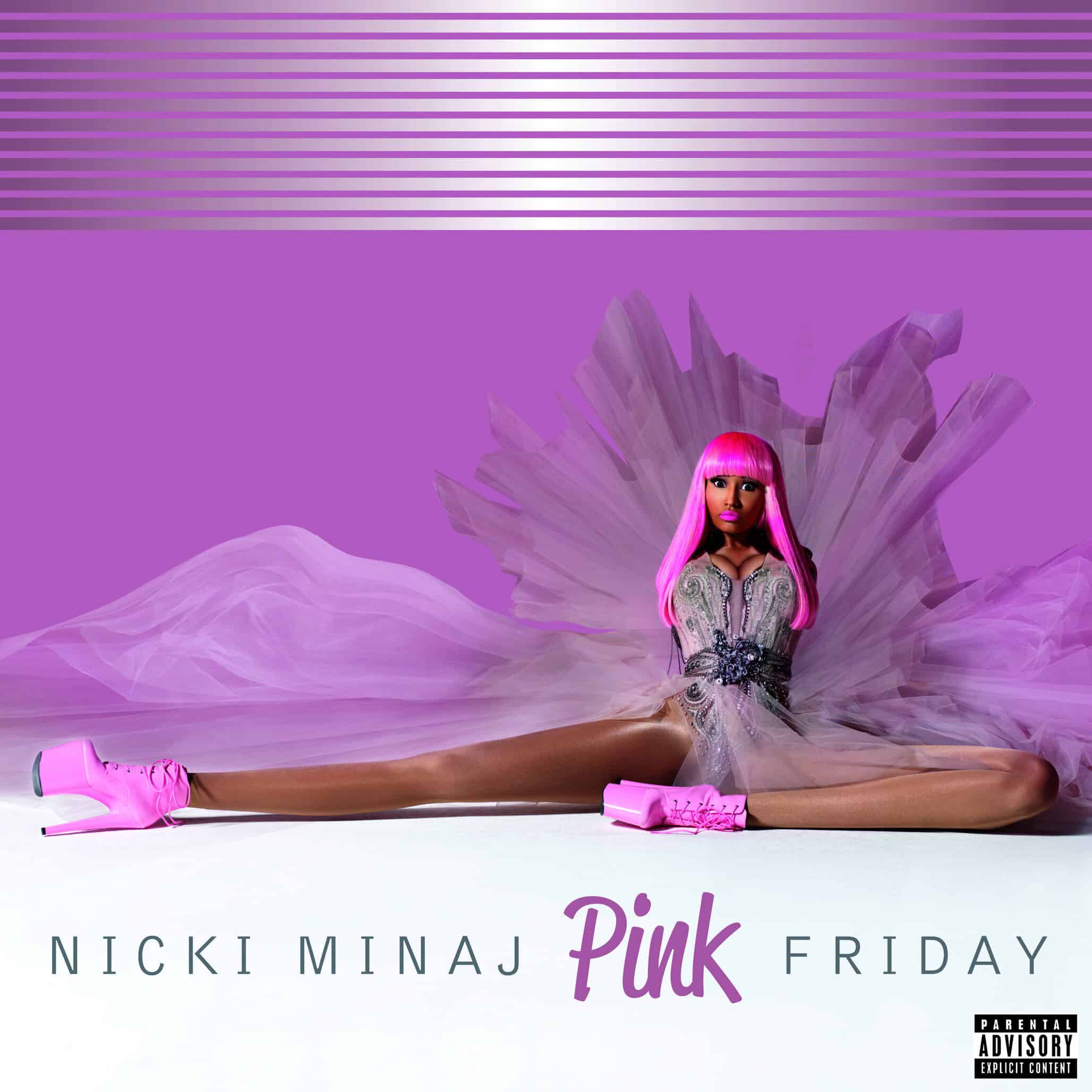
IRK: What was it like to work with Nicki Minaj and have the chance to turn her into a larger-than-life doll for her Pink Friday album cover?
GL Wood: Working with Nicki and her team and label was great. It all happened when I was reinventing my style. I was doing a lot of weird concepts that I loved, and the creatives I worked with loved, but the commercial world hated. I was making a lot of images, but wasn’t booking as many clients. I had told my editorial team that my concepts would be perfect for a celebrity or big musician; I just need to be given the chance. Somehow P. Diddy found my work and got in touch with me to do the artwork for Pink Friday. I felt very honored to be able to finally adapt my concepts to a bigger stage. I actually had grander plans for the album cover, but the label was on a deadline so time was limited, and I had to go with a more minimal version of the concept I had originally discussed with Nicki.
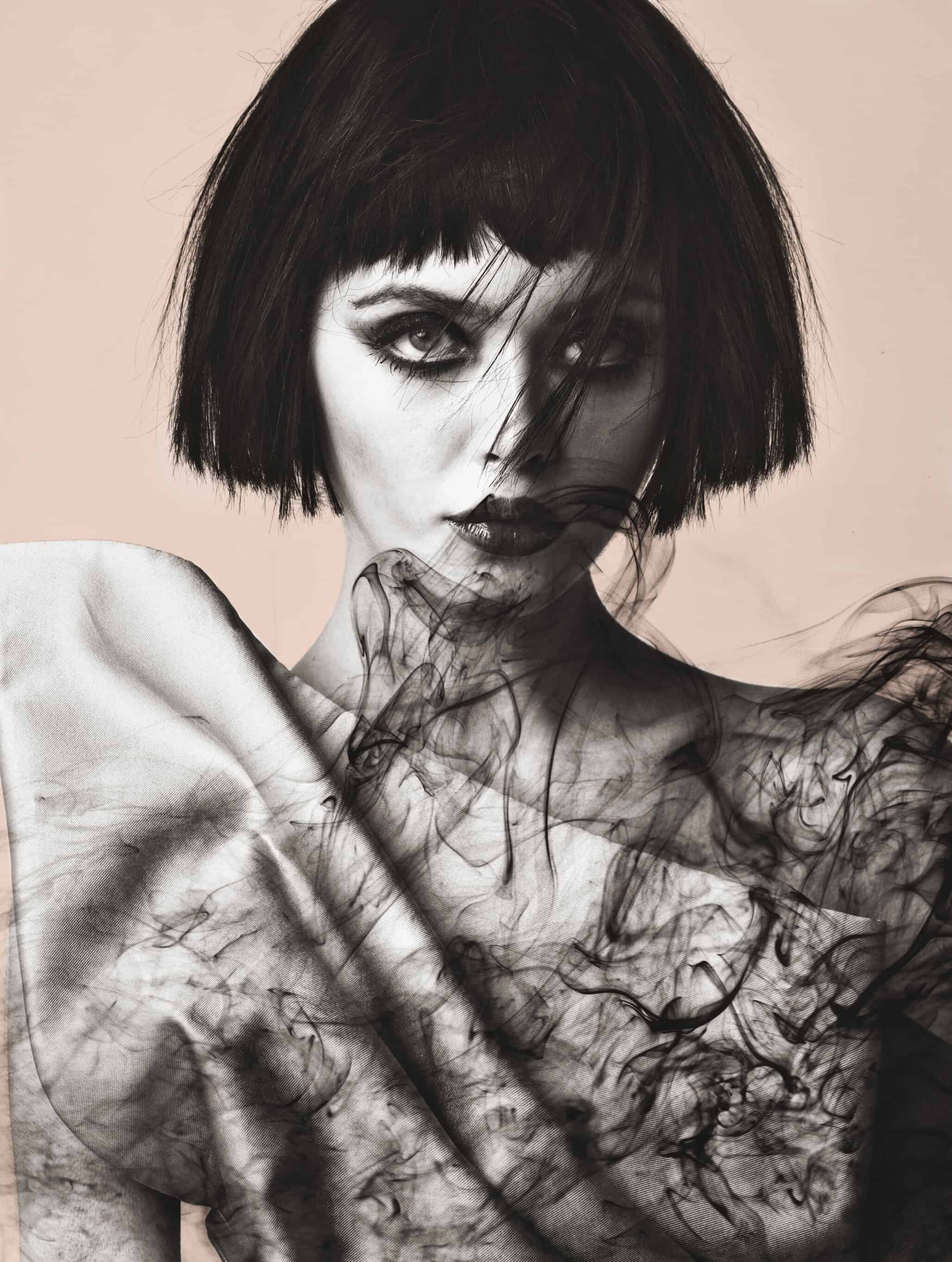
IRK: I love that you have brought a sense of the hand back into fashion photography. Right now the industry is very focused on producing highly retouched photos? What is your personal opinion on the use of Photoshop and excessive retouching in editorial photography?
GL Wood: I used to be a big fan of highly retouched photos. I liked how perfect everything looked. It wasn’t until 2014, when I was little burned out with the industry, that I noticed that there was way too much Photoshop usage. Clients were asking me to do ridiculous demands to fix images when it wasn’t necessary or would totally make the image look weird. During this time, big-named clients were over-using Photoshop to make models way too skinny or to cut off limbs and composite them elsewhere, but they were not making the image look ‘real’. Everything was too overdone. The industry didn’t want imperfections and it really turned me off. I started to do less and less retouching on the models. I didn’t want to retouch them to where they didn’t recognize themselves. I wanted to use Photoshop to help enhance the model; not transform them. I would clean up the image, but leave imperfections in the hair, skin, body, etc.
IRK: Having clearly defined your own unique voice in the industry, what advice would you give to young photographers trying to find their voice?
GL Wood: That is always a tough question to answer, because everyone’s path is completely different. I always tell young photographers what my professor, Nino, told me. “You have two paths to go down. 1. You can assist and maybe never have the chance to break off on your own. You will have the connections and experience to use, but you could be stuck just assisting. 2. You can venture out on your own, not ever assist, develop your own style and work, but have to deal with a lot of rejection, and maybe not make it to where you want to be. However, there could be the chance that you rise up and make a name for yourself.” I used that mantra for my whole career. I stuck to my path to be my own photographer. It definitely wasn’t easy to get where I have been. It is still challenging everyday, because the industry changes so fast. I would also tell a young photographer, to focus on their strengths and not try to emulate other photographers they admire. Take inspiration but don’t try to do the exact same thing. Get inspiration from other things out in the world and not from other photographer’s work. Inspiration outside of photography will help develop a style that is all your own.
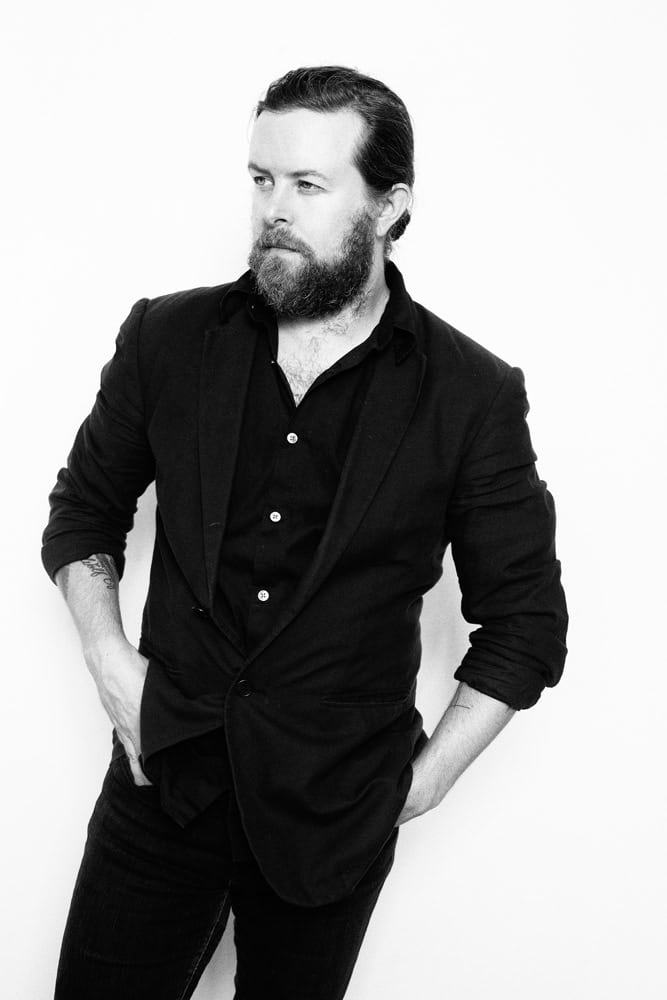
For more information on the work of photographer GL Wood, you can view his online portfolio at http://www.glwoodstudios.com/ or IG @glwoodphoto.
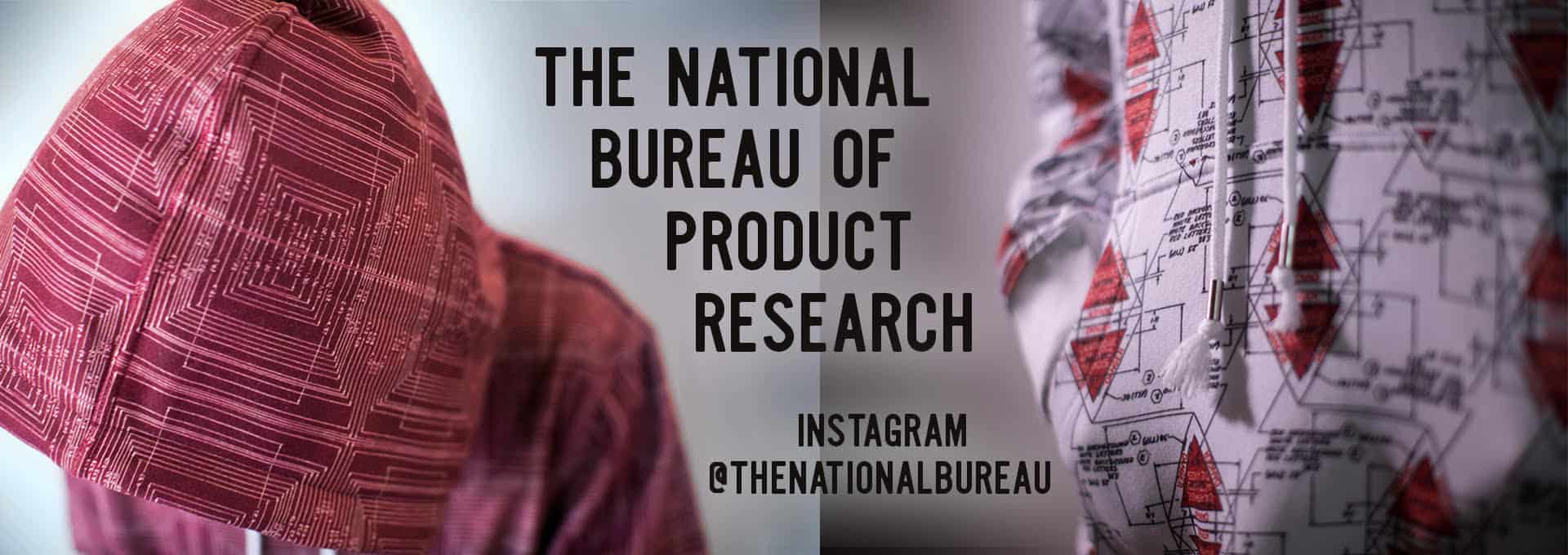
Share this post
Stacy Seiler is the Art Editor of Irk Magazine, joining the publication in August 2016. An accomplished artist, designer, writer and Assistant Professor at Parsons School for Design, Stacy has been a pioneer in the design industry since 1997. She began her career as a web designer and programmer focused on the corporate identity and branding of Fortune 500 companies including: FOX, News Corporation, AIG and McGraw-Hill.
For the past 11 years, Stacy has lectured on topics of Design Iteration, Typography, Information Visualization, Fashion and Fine Art at the esteemed Parsons School of Design, while balancing her time as a Contributing Writer of Arts and Culture at Downtown Magazine and a Docent of History and Preservation at Judd Foundation in New York City.
Through her research and drawings, Stacy’s art practice focuses on preserving the cultural past of New York City and beyond by exploring current issues of neglect and decay surrounding industrial architecture and its iconic connection to working-class communities. She has exhibited both nationally and internationally over the past 15 years.
Stacy graduated from the Maryland Institute College of Art, with a BFA in Fine Arts and a Minor in Art History. She received her MFA in Fine Arts from Parsons. Her work can be found on stacyseiler.com along with her daily musings on Instagram
Read Next

